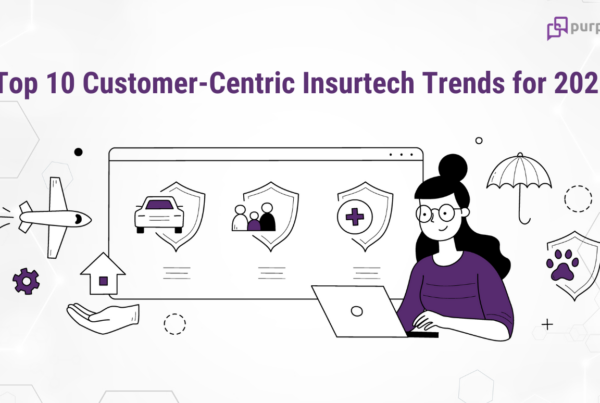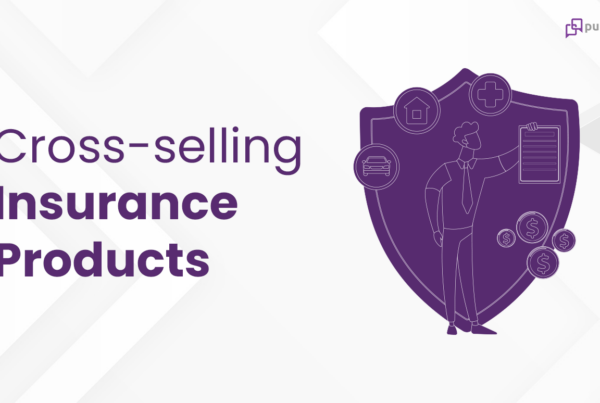
Hyper-Personalization – What is it?
Cart abandonment is a nightmare for every online business. Though various reasons are attributed to this type of customer behavior, the major cause found was the time consumption involved in the checkout process. Customers are not willing to spend their time typing in personal and shipment details. Today, consumers expect to have those data pre-filled during the checkout process. Sounds crazy right? Welcome to Gen Z online shopping journeys.
Are these expectations achievable? If a customer has already registered with a business’s online portal, it is viable to pre-fill the data, but what if the customer does not register with the online portal? In such cases, third-party registration can be made possible with Google, Facebook, and Apple which are the de facto sign-in options for Gen Z today. Yet, these third-party data partners will not provide the consumer’s latest or other lists of shipping addresses. Wait a minute! They will not provide? Does that mean they have our shipping addresses!? The answer is a big YES! All of our data are stored. This includes our current location, search behaviors, favorites, preferences, shopping patterns, and whatnot!
We live in an era of limitless options, shorter attention spans, and rising importance placed on personalized experiences. More than ever, companies need to stand out from the competition by providing unique services while meeting customer needs.
The basis for personalization, as we currently comprehend, is static information from demographic or transactional data, such as a customer’s name, gender, age, occupation, and purchasing patterns.
With unique, timely, and contextual ideas or experiences depending on users’ location, time, or behavior, hyper-personalization goes a step further to communicate with customers in real-time.
Hyper-personalization in Insurance
Hyper-personalization is the new norm. With connected devices and the help of data analytics, insurance companies can stay ahead of the curve with hyper-personalization.
“When it comes to the insurance industry, today’s priority is a well-defined hyper-personalization strategy that focuses on the 3 Rs of experience-led engagement ‒ delivering the right products, at the Right time through the Right channels.”
— Capgemini
These days, insurers are reorienting their organization toward customers, and not products. This is accomplished through learning more about customers by analyzing the data gathered via telematics, IoT, machine learning, and AI-enabled devices.
Consumers prefer the best coverage at the best possible price. Hence, the use of data to identify low-risk consumers and provide them with cheaper premiums has been at the heart of some of the most significant breakthroughs in Insurance Industry in the past ten years.
Hyper-personalization promises to help insurers manage their risks more effectively and offer lower premiums to the right customers. One of the most frustrating circumstances for a customer is being assigned to a customer category that is not their right fit. The other frustrating thing, as previously mentioned, is asking for too much data from the customers, while the information is already available with insurers or third-party data partners.
Customer demands are rising across the board. With the wide range of choices available, customers expect to be treated better (read: ‘as someone special).
Hyper-personalization makes this feasible by going one step further by combining a larger collection of data (such as telemetry and external data) and using it to develop a more in-depth and dynamic understanding of the customer. This information is then used to inform all elements of consumer engagement, both digital and physical.
To accomplish this, insurers must leverage data and analytical capabilities while rethinking the value chain to recognize their context — that is, taking into account their unique circumstances at any given time — and respond in an empathetic and relevant manner. The goal of hyper-personalization is to enable tailored, contextual interactions in sales, marketing, underwriting, servicing, and claims.
Using methods such as AI-powered Journey Orchestration Engines or Real-Time Interaction platforms enable companies to enhance the loyalty of existing customers. This is accomplished either by responding to changes in behavior or by predicting it using algorithms. In turn, this can enhance customer retention rate and indirectly increase the efficiency of customer acquisition.
Benefits of hyper-personalization
Insurance businesses can deliver tailored insurance coverage with the help of InsurTech solutions and platforms. Insurance firms all over the world are collaborating with InsurTechs to create highly profitable tailored products.
InsurTechs are leveraging AI, automation, big data, and analytics to create customized insurance plans for travel, health, home, and other insurance products.
Benefits to Customer
Today’s consumers are flooded with choices. By providing highly relevant and targeted content, hyper-personalization provides the following benefits:
- It saves customers time and money, reduces their effort, and eliminates information overload.
- It improves the customer experience with dynamic and unique messages across channels.
- It filters market noise and helps consumers make more informed decisions.
Benefits to Business
A properly implemented hyper-personalization (tactic) can yield the following benefits for a business:
- An increased ROI of up to 8 times.
- It will reduce considerable marketing spending, and lift sales by 10% or more.
- It will enhance customer growth and customer engagement by tailoring the product offering to fit their needs and proactive management of renewals.
- It unlocks enormous value through a customer-centric, data-driven approach.
- It provides a 50% increase in the customer prospect conversation rate with tailored product offers
- It increases the productivity of the agents by reducing the prospecting time considerably.
Hyper-personalization – Strategy
1. Customer-centric re-orientation
Most insurers are traditionally structured around the marketing of individual products rather than customer needs. Hyper-personalization requires taking a precisely contrasting approach. The organization must map out the complete end-to-end customer journey, align NBAs to that path, and eventually reconcile opposing goals to achieve hyper-personalization.
2. Technology
Hyper-personalization technology landscape is complex. Data is recognized as the lifeblood of hyper-personalization, powering the real-time decision engine. With data at its core, a successful hyper-personalization strategy relies on data analytics. Powered by Machine learning, Artificial Intelligence, Cloud platform, Business process agility hyper personalization makes the customer experience as never before. Tools like journey orchestration engines or real-time interaction engines will orchestrate recommendations across sales, marketing, and servicing, including underwriting and claims.
3. Customer Data – The lifeline
The underpinning component of hyper-personalization is customer data. Customer proprietary information comes from a variety of sources, including CRM and Customer Account Data, Internet and marketing data, Multi-channel interaction data, and Claims and fraud data.
Hyper-personalization capitalizes on real-time data that may include their location, time, date, and behavior. This data is sourced from
- Mobile app activities
- Website footprint
- Social media activities
- IoT data from wearable devices, telematics, etc.
Combining consumer data from multichannel will take hyper-personalization even further by empowering you to create one-to-one relationships with users. The more data you gather, the more understanding you can have of your consumers’ attitudes and behaviors, and the more persuasive your offer will be.
Finally, it’s crucial to remember that customer data is dynamic and that a process is needed to proactively gather, update, manage, and secure data. To achieve successful hyper-personalization, it is essential to establish explicit data collecting, analysis, storage, and privacy protocols.
4. Product offerings
The critical step is to tailor the most relevant offers by anticipating the customer’s needs. Information gathered from multiple data points will need to be analyzed to gain accurate insights into the attitudes and behavior of customers.
The data can be categorized to assist insurers in tailoring digital experiences to meet the expectations of their customers. Additionally, it permits them to modify insurance policies and costs to accommodate the unique needs of their customers.
Insurers can now further refine their offerings and cross-sell other products and services. It will help to create timely offerings to target their customers’ needs on the right channel like an instant message, an in-app message, or an email by the customer’s context. If customers feel they are remembered, it increases customer loyalty.
5. Market viability
The beauty of digital marketing is its ability to test different parameters easily and iterate accordingly. The marketing team can mix and match the execution with different offers, times of date, or channels to determine which combinations perform best. Based on the outcome, the offerings can be made more accurate with customer-centric messages.
The Future of Hyper-Personalization
Insurance companies that can use data to tailor and improve their products and client experiences will thrive in this information era. Insurtech roadmap should be structured to build competency to focus on customers’ needs, capturing buying signals and pain points, thereby customer satisfaction throughout the customer journeys.
While adapting to changing customer behavior, it is vital to have a technology platform that helps insurance companies stay ahead of the curve. The target is to create an insurance experience with zero human work. Get in touch with us today to start your hyper-personalization journey.




